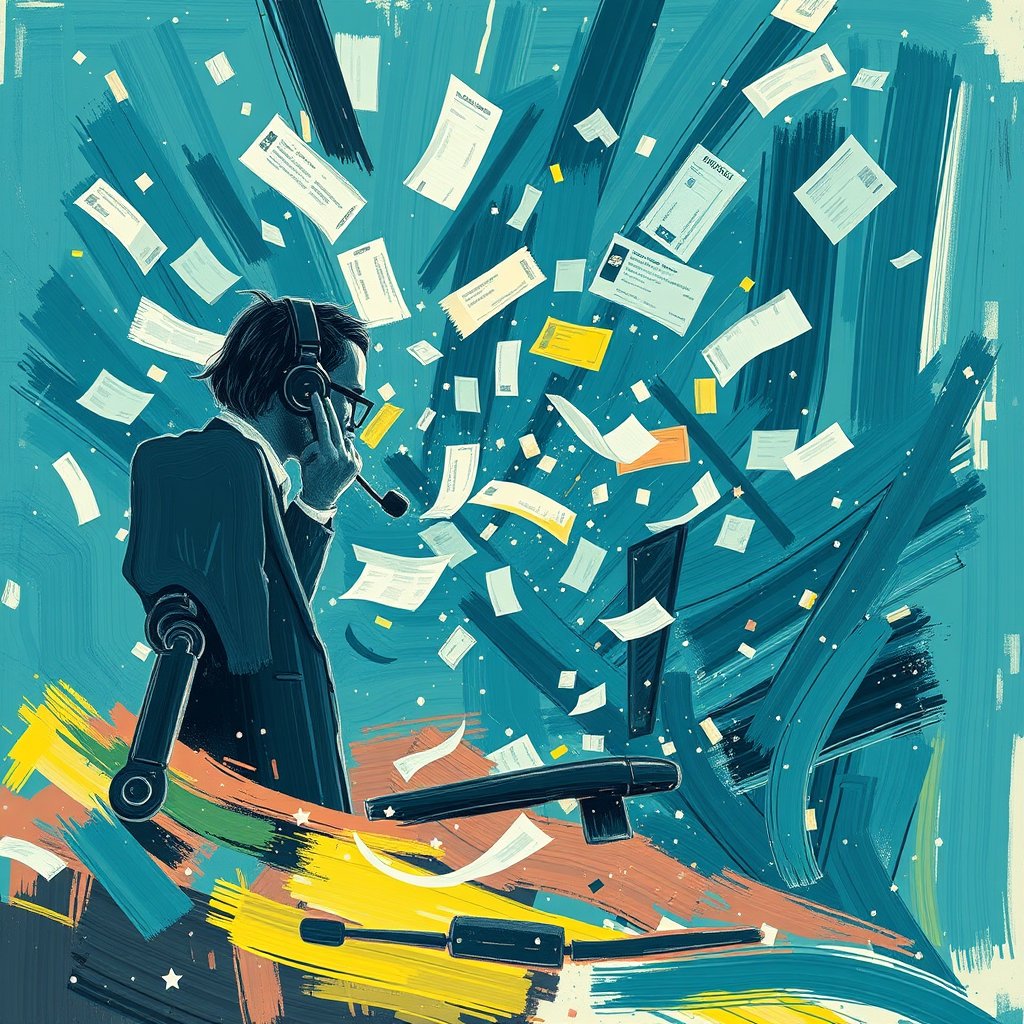In 2025, institutions are deploying artificial intelligence to manage risk while simultaneously introducing entirely new categories of risk that didn't exist five years ago.
The promise of AI in financial risk management is extraordinary: faster fraud detection, more sophisticated compliance monitoring, predictive market risk analysis that spots threats before they materialize. But the implementation reality is far more complex than vendor presentations suggest.
Both the transformative potential and the critical blind spots can turn risk management systems into risk generators.
AI systems can analyze millions of transactions in real-time, identifying patterns humans would never spot. Machine learning models detect anomalies, recognize sophisticated fraud schemes, and adapt to evolving tactics faster than rule-based systems.
The Reality: Modern Fraud Detection AI
Modern fraud detection AI works remarkably well until it doesn't. The challenge isn't false positives; it's the sophisticated attacks specifically designed to exploit AI vulnerabilities, such as adversarial AI, where scammers use their own ML models to probe fraud detection systems and identify weaknesses.
Fraud patterns evolve constantly. An AI model trained on 2023 fraud data may be obsolete by 2024. Yet many institutions deploy fraud detection AI and assume it will work indefinitely without retraining. The reality is that fraud detection models degrade predictably and measurably over time. Institutions need continuous monitoring of model performance, regular retraining schedules, and human oversight to catch fraud patterns the AI hasn't learned to recognize.
Best Practice Framework
A best practice framework can include:
Ensemble Approaches: Don't rely on a single AI model. Deploy multiple models with different architectures and training approaches. Fraudsters optimizing attacks for one model won't necessarily defeat others.
Adversarial Testing: Regularly red-team your fraud detection systems. You can even hire ethical hackers to probe for weaknesses before criminals find them.
Humans-in-the-Loop for Edge Cases: AI should flag suspicious activity, but humans should make final decisions on edge cases where false positives would damage customer relationships.
Continuous Learning Systems: Implement feedback loops where human fraud analysts' decisions train the AI in real-time, allowing systems to adapt to new patterns immediately.
Regulatory Compliance and Monitoring: The framework should include regulatory compliance and monitoring.
AI Compliance Monitoring
AI can monitor communications, transactions, and activities across global operations to ensure compliance with complex, evolving regulations. Natural language processing identifies problematic communications. Pattern recognition spots suspicious trading activity. Automated systems track regulatory changes and update monitoring accordingly.
Compliance AI is only as good as the data it's trained on and the rules it's programmed to enforce. And here's the uncomfortable truth: most compliance AI is trained on data that reflects historical regulations, market conditions, and compliance failures. When new regulations emerge (as they constantly do in financial services), compliance AI systems often operate in a dangerous gray area—they don't know what they don't know.
Critical Blind Spot: Explainability and Audit Trails
Regulators don't just want to know that you're monitoring for compliance violations; they want to understand how your monitoring works. Many AI systems, such as deep learning models, operate as black boxes. When a regulator asks, "Why didn't your system flag this violation?" the answer, "Our AI didn't identify it as suspicious," is insufficient. Financial institutions need explainable AI for compliance monitoring. Every decision the AI makes must be traceable, auditable, and justifiable to regulators.
Here's a scenario playing out across the industry: A bank deploys AI to monitor employee communications for potential market manipulation. The AI flags thousands of communications daily. Compliance teams can review 10% of flagged items thoroughly. The other 90% get cursory reviews. A regulator later identifies market manipulation that the AI flagged, but the compliance team missed in their cursory review. Who's liable? The institution, despite using AI monitoring. The lesson is that AI doesn't absolve institutions of compliance responsibility. It amplifies the consequences of poor implementation.
Best Practice Framework
Explainable AI Architectures: Choose AI systems that can articulate why they flagged specific items. Decision trees, rule-based hybrid systems, and attention mechanisms that highlight specific phrases or patterns are more defensible than pure neural networks.
Human Review Calibration: Don't just track how many alerts humans review—track agreement rates between AI and human judgments. Consistently low agreement suggests your AI needs retraining or your humans need more training.
Regulatory Engagement: Work with regulators to understand their expectations for AI-powered compliance monitoring. Some regulators are developing specific guidance; others are figuring it out as they go. Proactive engagement reduces future surprises.
Regular Model Audits: Compliance AI should undergo regular audits by independent third parties who can assess both performance and explainability. Treat this like financial audits, an expected cost of doing business.
Market Risk Analysis and Prediction
AI can analyze vast amounts of market data, news, social media sentiment, and historical patterns to predict market movements, identify portfolio risks, and optimize trading strategies with superhuman speed and accuracy.
Market risk AI represents both the most significant potential and the greatest danger in AI-powered risk management. Get it right, and you gain competitive advantages worth billions. Get it wrong, and you can trigger losses that threaten institutional survival.
Critical Blind Spot: Black Swan Events and Overfitting
AI excels at recognizing patterns in training data. But financial markets regularly experience unprecedented events, which by definition don't exist in historical data (e.g., "black swan" events and overfitting). The 2008 financial crisis. The COVID-19 market crash. The 2021 meme stock phenomenon. SVB's collapse. Each represented market conditions AI models had never encountered. Institutions that relied too heavily on AI risk models in these scenarios often performed worse than those using traditional risk management approaches because AI confidently predicted based on patterns that no longer applied. This is overfitting in its most dangerous form: AI models that work brilliantly in normal conditions but fail catastrophically during the moments when risk management matters most.
As more institutions deploy similar AI for market risk analysis, a new systemic risk emerges: correlated behavior. If multiple institutions use similar AI models trained on comparable data, they'll make similar decisions simultaneously.
When markets move against these positions, multiple institutions attempt to unwind simultaneously, amplifying market stress. This isn't theoretical; we've seen flash crashes partially attributed to algorithmic trading systems responding similarly to market movements.
Best Practice Framework
Stress Testing Against the Unprecedented: Don't just test AI market risk models against historical scenarios. Create synthetic scenarios that have never occurred but are theoretically possible. How would your models respond to simultaneous currency devaluation, credit default, and liquidity crisis?
Conservative Position Sizing: Even sophisticated AI shouldn't control position sizing alone. Implement strict limits on the amount of capital that can be deployed based on AI recommendations. The most sophisticated AI in the world shouldn't be able to bet the institution on a single trade.
Diversity of Approaches: Just as you don't want all your portfolio in one asset class, you don't want all your risk analysis from one AI approach. Combine AI with traditional quantitative models, fundamental analysis, and experienced human judgment.
Kill Switches and Circuit Breakers: Every AI-powered trading or risk system needs hard stops. Define specific conditions where AI systems automatically reduce risk or halt entirely pending human review.
The Meta-Risk: AI as a Risk Multiplier
Beyond domain-specific challenges, AI in financial risk management creates meta-risks that many institutions underestimate:
Model Risk Concentration
Financial institutions are deploying dozens or hundreds of AI models simultaneously. These models often share:
- Common training data sources
- Similar architectures and algorithms
- Shared assumptions about market behavior
- Correlated blind spots
When one AI model fails, others with similar characteristics often fail simultaneously. This creates a concentration risk that's difficult to identify until failure occurs.
The mitigation strategy should be to create a "model dependency map" showing which AI systems share data sources, architectures, or assumptions. Treat highly correlated models as a single point of failure for risk management purposes.
Talent and Knowledge Risk
AI development in finance requires rare expertise: professionals who deeply understand both advanced machine learning and financial risk management. Most institutions have a handful of such individuals.
What happens when they leave? Who maintains the AI systems they built? Who understands the assumptions embedded in the models?
Knowledge concentration is hazardous with AI because models often operate successfully for months or years before encountering conditions where embedded assumptions matter. By then, the original developers may be long gone.
Mitigation Strategy: Mandate extensive documentation of all AI models, including training data characteristics, architectural decisions, known limitations, and performance degradation triggers. Treat this documentation as critical infrastructure, not optional paperwork.
Regulatory and Reputational Risk
Financial regulators globally are developing AI governance expectations. But the regulatory landscape remains fragmented and evolving. What's acceptable in one jurisdiction may violate regulations in another.
More fundamentally, public and regulatory tolerance for AI failures in finance is low. A bank that misses fraud due to human error faces different scrutiny than one that misses fraud because "the AI didn't flag it." Fair or not, AI failures generate more negative attention.
Mitigation Strategy: Implement governance frameworks that exceed current regulatory requirements. It's easier to be compliant as regulations tighten than to retrofit governance onto existing AI systems.
The Human Element: Why AI Amplifies Rather Than Replaces Human Risk Management
The greatest misconception about AI in financial risk management is that it replaces human judgment. In reality, effective AI amplifies human expertise while introducing new requirements for human oversight.
The Automation Bias Trap
Research consistently shows humans over-rely on AI recommendations, even when those recommendations are wrong. This "automation bias" is particularly dangerous in risk management.
When AI fraud detection flags a transaction, compliance officers assume it's probably fraud. When AI misses a red flag, it's probably legitimate. The AI's judgment replaces rather than informs human judgment.
The Solution: Implement mandatory skepticism protocols. Require risk managers to justify their decisions beyond "the AI said so independently." Train teams to question AI outputs actively rather than accepting them passively.
Skill Atrophy and Dependency
As AI handles more routine risk management tasks, human risk managers lose practice with fundamental skills. When AI fails or encounters unprecedented conditions, humans may lack the skills to take over effectively.
This is particularly concerning because AI failures often occur precisely when conditions are most challenging, when human expertise is most needed.
The Solution: Maintain regular training on manual risk assessment techniques. Periodically run "AI-off" exercises where risk teams practice identifying fraud, compliance violations, or market risks without AI assistance.
The Judgment Boundary
The most critical question in AI-powered risk management: Where does AI judgment end and human judgment begin?
For routine, high-volume decisions (such as fraud screening millions of transactions), AI should operate autonomously, with human review of edge cases. For high-stakes decisions (significant credit exposure, regulatory interpretations, crisis response), humans should make final calls informed by AI analysis.
Most institutions haven't defined these boundaries clearly. Teams make ad-hoc decisions about when to trust AI versus escalating to humans. This inconsistency creates both risk and inefficiency.
The Solution: Develop and document explicit decision frameworks:
- AI decides autonomously
- AI recommends, human decides
- Human decides, AI provides analysis
- Human decides without AI
These frameworks should be reviewed quarterly and updated based on AI performance and emerging risks.
Looking Forward: The Evolution of AI Risk Management
The financial services industry is still in the early stages of AI-powered risk management. Current implementations represent version 1.0. What does version 2.0 look like?
Federated Learning for Fraud Detection
Individual institutions can't share fraud data due to privacy and competitive concerns. But federated learning allows multiple institutions to train AI models collaboratively without sharing underlying data.
This could enable industry-wide fraud detection models that learn from patterns across the entire financial system while preserving institutional confidentiality. Early experiments show significant improvements over single-institution models.
Explainable AI as a Compliance Requirement
Regulatory pressure will push financial institutions toward explainable AI architectures. Black box models may become unacceptable for regulated activities.
This represents both a constraint and an opportunity. Institutions that develop expertise in explainable AI now will have competitive advantages as regulations tighten.
Adversarial Robustness Testing
Just as financial institutions conduct penetration testing for cybersecurity, adversarial robustness testing will become standard practice for AI systems. Red teams will specifically attempt to fool AI risk management systems, identifying vulnerabilities before adversaries exploit them.
Human-AI Teaming Frameworks
The future isn't AI replacing human risk managers; it's AI and humans working together more effectively. Research into optimal human-AI collaboration in high-stakes decision-making will inform better operational frameworks.
Some institutions are experimenting with "AI sparring partners" systems designed to challenge human decisions and force justification rather than simply recommending actions. Early results suggest this approach reduces both false positives and false negatives compared to traditional AI recommendations.
The Fundamental Question: Should We?
The financial services industry has largely asked "How can we deploy AI for risk management?" without spending enough time on the more fundamental question: "Should we?"
Not every risk management function benefits from AI. Some risks are better managed through traditional approaches, regulatory relationships, and human expertise.
AI Excels At:
- High-volume, pattern-recognition tasks
- Processing vast amounts of data quickly
- Identifying subtle correlations humans would miss
- Operating consistently 24/7 without fatigue
AI Struggles With:
- Unprecedented situations outside training data
- Nuanced judgment calls requiring contextual understanding
- Ethical dilemmas without clear correct answers
- Rapidly changing regulatory environments
Sophisticated financial institutions are developing explicit criteria for when AI adds value versus when traditional approaches are superior. This selectivity often delivers better outcomes than blanket AI deployment.
Conclusion: Managing the Risk of Risk Management
AI-powered risk management in finance represents a fundamental irony: the tools we're deploying to reduce risk create new categories of risk that require their own management.
This doesn't mean AI shouldn't be used for financial risk management. It means AI must be deployed thoughtfully, with a clear-eyed understanding of both its capabilities and limitations.
The Institutions That Will Succeed Are Those That:
- Deploy AI selectively where it adds genuine value
- Maintain robust human oversight and expertise
- Continuously monitor and retrain models
- Document decisions and maintain explainability
- Prepare for AI failures with backup procedures
- Treat AI governance as seriously as financial governance
The most significant risk in AI-powered risk management isn't AI failure, it's overconfidence in AI success. Institutions that deploy AI while maintaining healthy skepticism, robust oversight, and human judgment will harness AI's benefits while avoiding its pitfalls.
Those who treat AI as a solution rather than a tool will learn expensive lessons.
The question isn't whether AI will transform financial risk management; it already has. The question is whether financial institutions will transform their governance, culture, and practices to manage AI-powered risk management effectively.
The evidence suggests we're still in the early stages of figuring this out. And in financial services, the cost of figuring things out the hard way is measured in billions.



